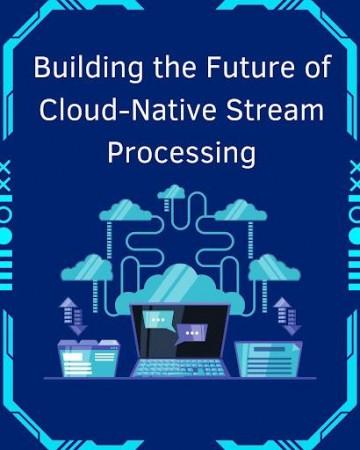
In today's fast-paced technological landscape, real-time data processing is necessary for organizations seeking actionable insights from their vast data streams. With the rise of cloud-native architectures, enterprises are leveraging innovative design patterns to create resilient, scalable, and efficient stream processing systems. Mayur Bhandari, an expert in cloud computing, explores these innovations in his latest research, shedding light on cutting-edge advancements that redefine how data is handled in real-time.
The Shift from Batch to Real-Time Processing
Traditional batch processing, which processes data at scheduled intervals, often results in delayed insights. However, cloud-native stream processing systems have revolutionized data handling by enabling real-time analysis. These systems can process millions of messages per second with minimal latency, allowing businesses to make instant decisions based on live data. This shift has been particularly impactful in industries requiring immediate response times, such as finance, healthcare, and e-commerce.
Scalable Architectures for High-Throughput Processing
Scalable architectures are a key innovation in cloud-native stream processing, enabling dynamic horizontal scaling. Using containerized environments and distributed frameworks, modern platforms handle heavy workloads while maintaining performance. Studies show these systems process up to 1.2 million events per second with low latency, ensuring efficiency, reliability, and seamless scalability.
Enhancing Reliability Through Fault-Tolerant Mechanisms
Reliability is a critical factor in stream processing, and innovative fault-tolerance mechanisms play a vital role in ensuring uninterrupted data flow. Advanced checkpointing strategies and parallel recovery techniques have significantly improved system resilience. With optimized fault-tolerance implementations, cloud-native systems can restore operations in under five seconds after a failure, maintaining data integrity and minimizing disruptions.
AI-Driven Monitoring and Observability
Integrating artificial intelligence into monitoring and observability tools has transformed stream processing. AI-powered systems analyze telemetry data in real-time, accurately detecting anomalies. By leveraging predictive analytics, these systems identify potential failures before they occur, reducing incident response times by over 60%. This proactive approach enhances system stability and minimizes downtime, improving overall performance.
Optimized Resource Management and Auto-Scaling
Resource efficiency is crucial in cloud environments, where modern stream processing uses auto-scaling to optimize utilization. Predictive models adjust resources dynamically, cutting costs while ensuring performance. Research shows adaptive allocation improves CPU utilization by 25% and reduces memory overhead by 30%, enhancing cost-effectiveness and sustainability in cloud-native solutions.
Security and Compliance in Streaming Environments
With the increasing emphasis on data privacy and security, cloud-native stream processing platforms incorporate robust security frameworks. Role-based access controls, data encryption, and compliance monitoring ensure that sensitive information remains protected. These security measures maintain high processing efficiency, with organizations achieving 99.9% compliance with data protection regulations while sustaining minimal latency.
The Role of Edge Computing in Stream Processing
Edge computing enables decentralized data processing, reducing reliance on centralized cloud resources. Edge-based stream processing lowers bandwidth use and improves latency. Studies show that integrating edge computing with cloud-native processing reduces cloud data transfer by 55% while preserving real-time capabilities. This hybrid model enhances scalability and accelerates decision-making for efficient, responsive systems.
Future Trends in Cloud-Native Stream Processing
Emerging technologies, including IoT integration, machine learning-driven analytics, and hybrid cloud-edge architectures, are shaping the future of cloud-native stream processing. As businesses continue to demand real-time insights, advancements in data processing frameworks will drive further speed, security, and efficiency optimizations. Innovations such as fog computing and intelligent workload distribution will further enhance the adaptability of stream processing systems in diverse industry applications.
In conclusion, Mayur Bhandari's research highlights the transformative impact of cloud-native stream processing innovations. These advancements are reshaping real-time data analytics from scalable architectures to AI-driven observability and edge computing integration. As enterprises embrace these technologies, they unlock new efficiency, security, and cost optimization opportunities in an increasingly data-driven world.

















